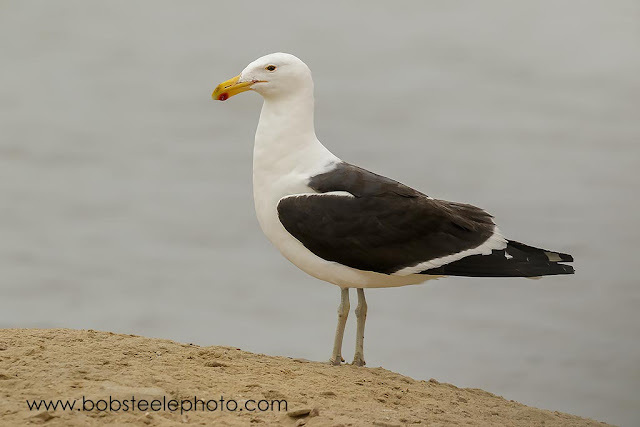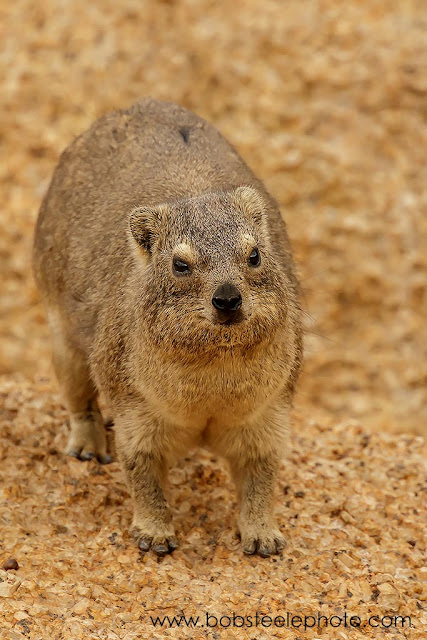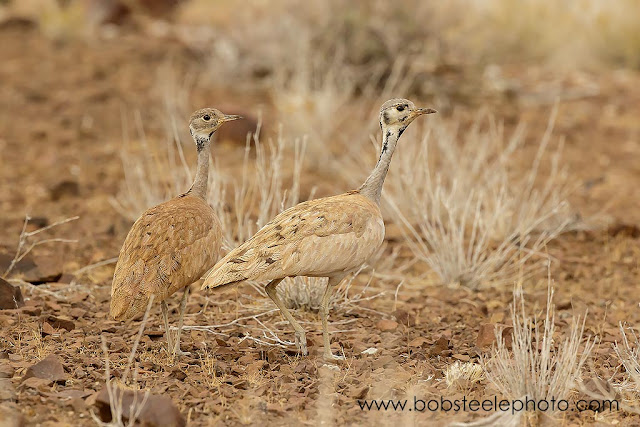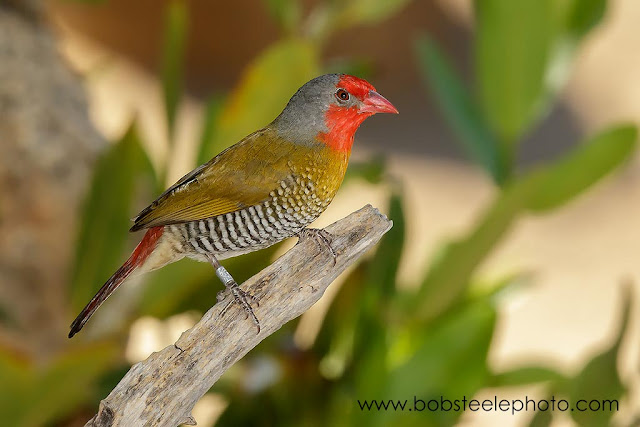 |
| Sunset rainbow in the Spitzkoppen Mountains |
We arrived at the desert coastal town of Walvis Bay in the early afternoon. It's such a strange feeling to clearly be in the desert with large sand dunes around, and yet on the beach. Apparently when the wind blows here, as it does for about three months a year, it can be quite scary with the dunes moving into town by the truckload. We hear that one of the chief exports of Walvis Bay is sand - by truck back out into the desert.
We cruised the shoreline in our wagon for the afternoon and saw tons of great shorebirds, terns and gulls, and thousands of Lesser and Greater Flamingos.
Walvis bird list
 |
| Black-winged Stilt |
 |
| Cape Teal |
 |
| Chestnut-banded Plover |
 |
| Greater Flamingos |
 |
| Greater Flamingos |
 |
| Lesser Flamingos |
 |
| Leser Flamingos |
 |
| White-fronted Plover |
Walvis Bay boat cruise list
 |
| Selfi with a Cap Fur Seal |
 |
| Great White Pelican waits for his fish |
 |
| A very out of range African Penguin was lounging on an oil platform being repaired |
 |
| Great White Pelican |
 |
| A Black-backed Jackal cruising the beach in search of food |
 |
| Cape Cormorant |
 |
| Cape Fur Seals |
 |
| Cape Fur Seals |
 |
| Hartlaub's Gull |
 |
| Kelp Gull |
Bird list
 |
| Damara Tern |
 |
| Damara Tern |
 |
| Crown Cormorant |
 |
| Desert landscape |
 |
| Ostrich on the moon |
 |
| Susan checks out a young welwitschia, probably only a few hundred years old |
 |
| Female cones |
 |
| Both male and female welwitschia growing together |
 |
| Susan at the arch |
 |
| One of the most poisonous snakes in the world, Black Mamba |
 |
| Layard's Tit-babbler |
 |
| Kaokoland Black Mongoose |
 |
| Monteiro's Hornbill |
 |
| Mountain Wheatear |
 |
| Spitzkoppen Mountains |
 |
| The Namibian "Matterhorn" in the Spitzkoppen Mountains |
 |
| Pictographs |
 |
| Rock Hyrax were abundant |
 |
| Rock Hyrax |
 |
| Rock Hyrax |
 |
| Rock Hyrax |
 |
| Ruppell's Korrhaan (Bustard) |
 |
| Ruppell's Korrhaan (Bustard) |
 |
| Sabota Lark |
 |
| Sunset that night |
 |
| And sunrise the next morning |
Spitzkoppen bird list
 |
| Butter Tree |
 |
| Euphorbia virosa, or Poison Tree |
 |
| Euphorbia virosa flowers |
 |
| Moringa Ovalifoli |
 |
| Rock Fig high on a cliff |

 |
| Hanging out and watching a beautiful sunset |
Birding the lodge grounds and surrounding area produced many great birds, the best being the tricky Hartlaub's Spurfowl. Lots of other great things to see too.
Erongo bird list
 |
| Looking at the Hartlaub's Spurfowl |
 |
| Harlaub's Spurfowl |
 |
| African Paradise Flycatcher |
 |
| Damara Red-billed Hornbill |
 |
| Dassie Rat, or Noki |
 |
| Freckled Nightjar |
 |
| Green-winged Pytillia |
 |
| Red-billed Spurfowl |
 |
| Namib Rock Agama |
 |
| Namib Rock Agama |
 |
| Red-backed Shrike |
 |
| Rosy-faced Lovebird |
 |
| White-throated Canary |
 |
| Yellow-throated Skink |






That was excellent. Etosha is supposed to be one of the gems of southern Afica. Wish we could there.
ReplyDeleteTerrific portraits. Rock hyrax teeth!, Nightjars so similar the world over, the Pytillia is banded - great, African Paradise Flycatcher so similar to our own, as well as the Shrike. The tenacious rock fig show Nature enduring. Great color on the Rock Agama. Scenery photos help us to orient and sunsets are always welcome.
ReplyDeleteI really appreciate your update. What a country!
The butter tree is new to me. The jackal photo is terrific.
ReplyDelete